Again, inspired by this question, and the great answers I received here, I am curious as to why these infinite sums can be modelled with smooth functions.
It appears that $\sum_{k=1}^{n}\dfrac{\sin(k)}{k}$ can be modelled with $\dfrac{\pi-1}{2}-\dfrac{\cos(k)}{k}$

and that $\sum_{k=1}^{n}\dfrac{\sin(\sqrt{k})}{k}$ can be modelled with $C-\dfrac{2\cos(\sqrt{k})}{\sqrt{k}}$, where $C$ is calculated in Mathematica numerically with fact that $\sum_{k=1}^{\infty}\dfrac{\sin(\sqrt{k})}{k}=\sum_{k=1}^{\infty}\dfrac{e^{i\sqrt{k}}}{k}$:
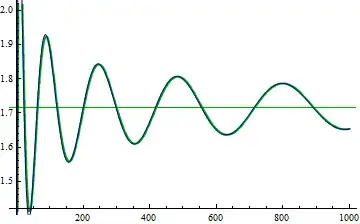
and more generally, that $\sum_{k=1}^{\infty}\dfrac{\sin(k^{1/n})}{k}$ can be modelled with $\dfrac{\pi-1}{2}+j(n-1)-\dfrac{n\cos(k^{1/n})}{k^{1/n}}\text{ for any }n\in\mathbb{N},$ and hence converges to $\dfrac{\pi-1}{2}+j(n-1),\text{ where }j\rightarrow\ \approx 0.6247\dots,$
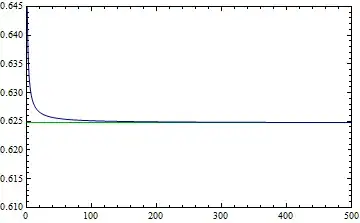
$\sum_{k=1}^{\infty}\dfrac{\sin(k^{1/100})}{k}$ would therefore converge to approximately $\dfrac{\pi-1}{2}+99\times0.62511\dots$
I would very much like to understand this analytically, rather than numerically however.
Update
It appears that $j$ tends to $0.6247\dots$, or $\int_{t=1}^{\infty}\dfrac{\sin(t)}{t}\text{d}t$ (thanks to Yves Daoust's answer below) at a similar rate of convergence as $\dfrac{e-(1-\frac{1}{n})^n}{const}\rightarrow 0$ (where $const\approx35$)
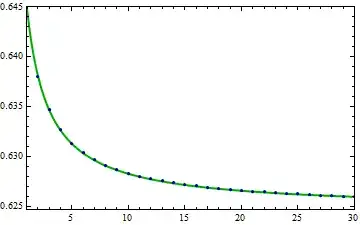
with a relatively small error
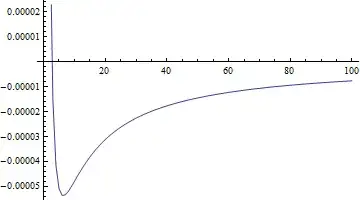
The convergence value of $\sum_{k=1}^{\infty}\dfrac{\sin(k^{1/n})}{k}$ for any positive real $n$ can therefore be approximated by $$\dfrac{\pi-1}{2}+\bigg(\int_{t=1}^{\infty}\dfrac{\sin(t)}{t}\text{d}t+\dfrac{e-(1-\frac{1}{n-1})^{n-1}}{35}\bigg)(n-1)$$ compare (for $n>1$):
n = 10;
p = Quiet[N[Im[Sum[E^(I k^(1/n))/k, {k, 1, Infinity}]]]];
j1 = w /. FindRoot[p - (\[Pi] - 1)/2 == N[w (n - 1)], {w, 1}];
j2 = NIntegrate[Sin[t]/t, {t, 1, Infinity}] + (E-(1 + 1/(n-1))^(n-1))/35;
(\[Pi] - 1)/2 + j1 (n - 1)
(\[Pi] - 1)/2 + j2 (n - 1)
It is not that great for very small $n>1$ though! It would be nice to know the exact rate of convergence to $\int_{t=1}^{\infty}\dfrac{\sin(t)}{t}\text{d}t$
Update 2
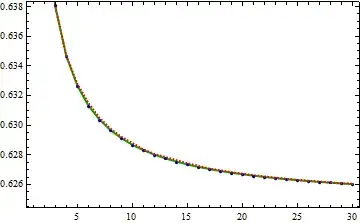
where red line is given by \begin{align*} n \left( \frac{\pi}{2} - \mathrm{Si}(1) \right) + \frac{\sin a}{2} + \int_{1}^{\infty} \frac{ax^{1/n}\cos(ax^{1/n}) - n \sin(ax^{1/n})}{n x^{2}} \tilde{B}_{1}(x) \, dx \end{align*} for $a=1,$ as shown in sos440's answer below.
Examples for $n=2$ and $n=3$:


where the discrepancy between the red line and the "actual" is due to numerical error in computation.